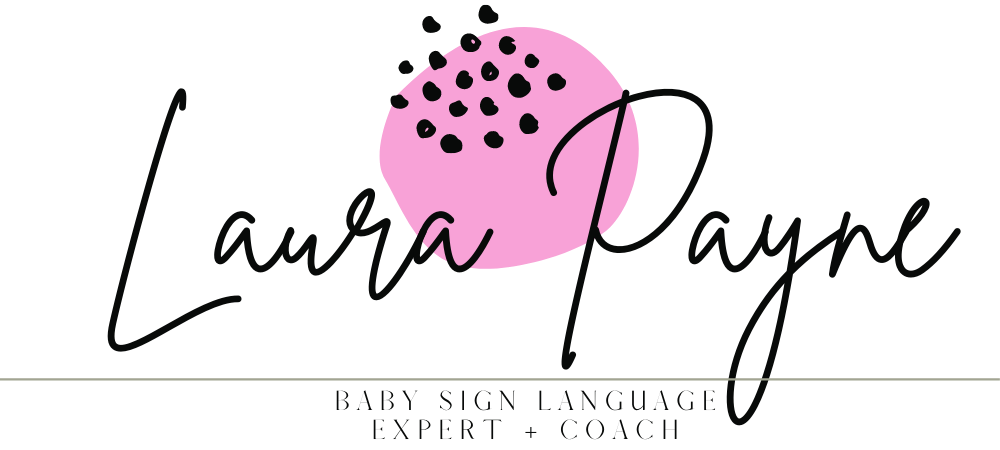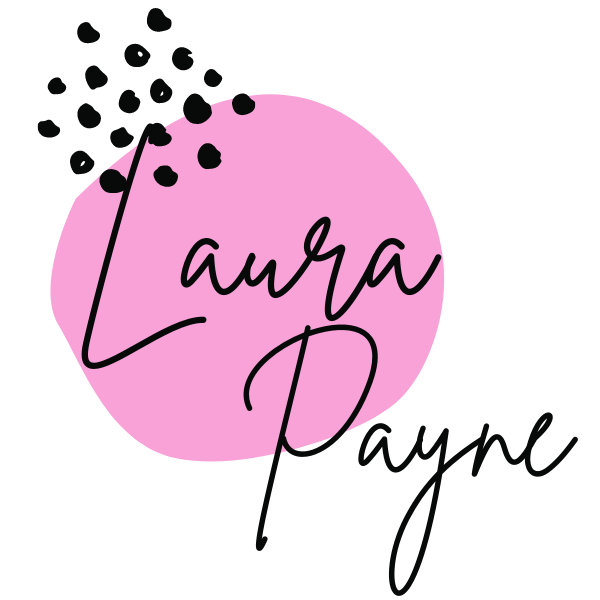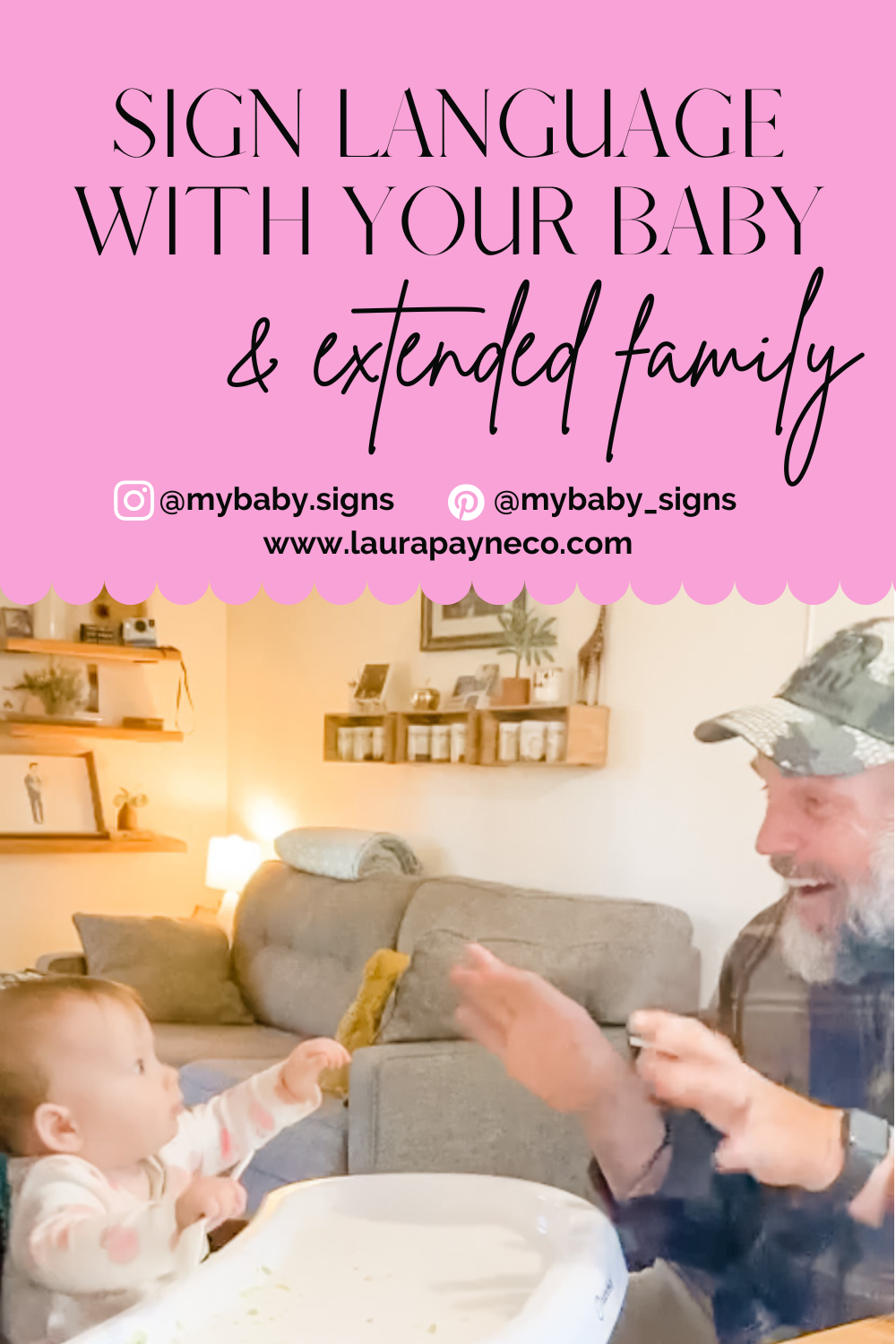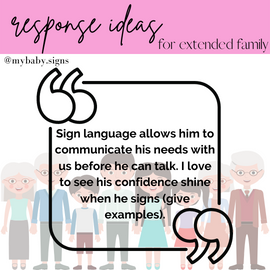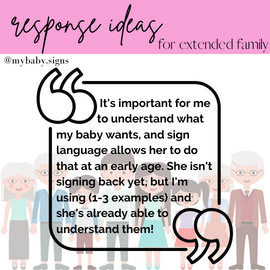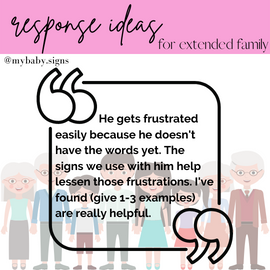Sign Language With Your Baby & Extended Family
When you are teaching your baby or toddler sign language, it is very common for the grandparents and extended family members to be curious and have questions. Some family members are very open to learning the ASL signs you are teaching your baby, and others may be more hesitant.
Having conversations with family members about your parenting style, decisions regarding sleep and feedings, and car seat requirements can feel like walking on eggshells at times. Afterall, “we did it this way and you survived!”
This blog post will help you navigate these comments about teaching your baby sign language with response ideas, benefits, tips to help it go over more smoothly, and signs that I recommend your extended family starting with.
If you don’t already, please follow me on Instagram for more about how sign language can be a game charger for your baby / toddler’s early communication skills.
5 benefits to extended family & grandparents learning sign language for your baby or toddler:
Ease the frustrations for them + your babe
When they are in town visiting, helping with childcare, or dropping by for some quality time, it’s only a matter of time until your little one attempts to communicate with them. Usually, there is a bit more of a guessing game for them about what your baby is needing. As you know from experience, not being able to easily identify what that is can be frustrating, and it can be more frustrating for them because they aren’t as used to this as they once were when they had young children.
It can also be more frustrating for your little one as well, because they may be used to being able to communicate their needs and wants more clearly with sign language. When this isn’t effective with other family members, those initial frustrations resurface.
Sign language can reduce the frustrations for both sides, so they can get back to having a fun time together!Increase positive interactions + this special bond
When those frustrations are reduced, this can allow more space for them to have quality time, bond with one another, and begin to build those fond memories that will last a lifetime.Consistency + continuous modeling for your little one
The more that sign language is used and modeled for your child, the better. Having additional people who understand their signs to communicate their needs and wants will continue to reinforce this method of communication. The more it’s reinforced, the more likely your baby or toddler will use sign language to communicate and have that motivation to learn additional ASL signs.Encourages open mindedness about your parenting
The tips and suggestions in this article will increase the likelihood your parents and extended family members will have an open mind about using sign language with your little one. This may even trickle down into a few other areas such as your decisions about sleep, foods and meals, play, screen time, and more.Endless bragging rights to their friends (they're all about showing off their grandchild, right?!)
Once they get that first video or story of how they were able to communicate with their grandchild - enter all the bragging rights! You know very well they will be showing it off to their best friends, retelling the story to as many people they can find who will listen.
Want to use sign language with your little one?
Get Started Now with 10 functional ASL signs to start using with your baby or toddler right away. Learn 3 tips to ensure you are using signs correctly and with realistic expectations. Whether you have already started signing, or just warming up to the idea, this free guide will take you one step closer to your goal!
Look Who’s Signing Now is my signature four part course that teaches you the exact blueprint I use to teach my own children sign language. Beginning with the foundation of why and when to use baby sign language, how to implement it, and what signs to use. With this self-study e-course, you will have the confidence to sign with your baby and boost their early communication while reducing frustrations, tantrums, and time wasted playing the guessing game.
Check out my online resources for parents! Browse my current offerings.
Responding to comments from family members about teaching your baby sign language
You’ve probably heard one of these already:
“We don’t need to sign, we can just wait until they learn to talk.”
“We didn’t do this with you, and we all survived!”
“I’m too old to learn something new like that.”
“I don’t want my grandbaby’s speech to be delayed.”
Here are three response ideas:
Three tips when responding to family members about sign language with your baby or toddler:
Share the benefit that is most important to you.
This may be meeting their needs, lessened frustrations, confidence, or anything else.
💥This allows your family to hear your WHY.Include your little one's skills.
Perhaps the baby is beginning to recognize signs, has a few in their vocabulary, or is able to use them in addition to their spoken vocabulary.
💥This allows your family to witness the WINS.Model and show them a few of the signs you and your little one are using.
It's also helpful to talk to them about how your babe signs it, since it may be approximated.
💥This allows your family to feel CAPABLE.
5 ASL signs for extended family members to start with first
In this reel I posted on Instagram, I share 5 ASL signs for grandparents and extended family members to use with your baby first. It’s important to note that these aren't just any ASL signs!
They are 5 functional words that your little one will most likely be needing and wanting to communicate with their grandparents + extended family members frequently. Starting with these will more than likely give your family members as many quick wins as possible, hopefully leading them to wanting to learn more signs that you are teaching their grandchild.
I hope these benefits, tips, responses, and suggestions have empowered you to better navigate this conversation topic with your extended family members. Regardless of how they react and respond, please know that you are doing what is best for you, your family, and your child! Please know that if this does not end up with the result you are hoping for, your child can still learn many words in sign language to boost their communication and confidence. I know you will be successful!
